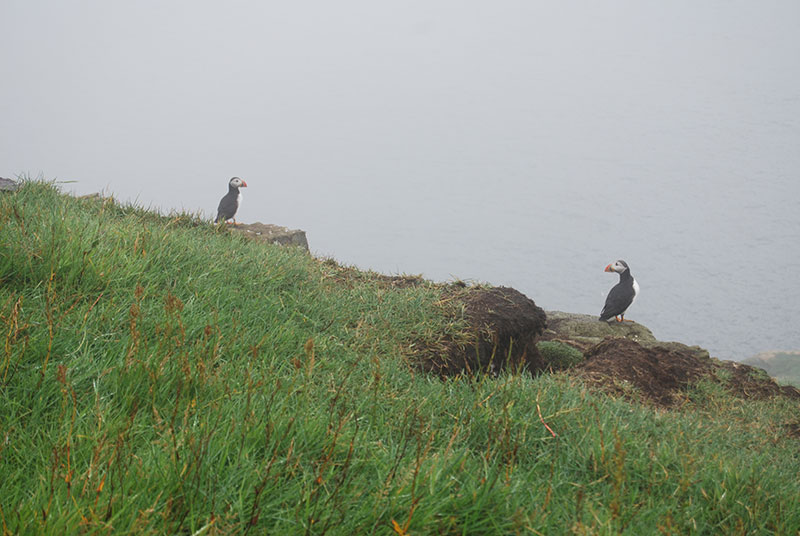
Puffins on Mykines (more pictures at the end of the article)
It’s pouring down, absolutely streaming. Wind lashes across the cliffs above the treacherous Atlantic Ocean. And I’m on my summer holiday. But I’m loving it because all around us, wings flapping madly a few feet above our heads, there they are: squadrons of shiny black puffins.
We are in the centre of a puffin colony on the edge of the island of Mykines (pronounced Mitchiness) in the Faeroe Isles, reached by a 45-minute ferry that departs twice a day from Vagar, another island. There are 18 main islands in the Faeroes, which are a semi-autonomous part of Denmark and lie 160 miles north of the Outer Hebrides, the closest landmass, and halfway between Shetland and Iceland.
It is a magical spot. The puffins sit with their quizzical cartoon-like faces next to holes in the emerald slope (the grass is particularly green as the puffins fertilise the land). They don’t mind human beings at all: often we walk within a few feet of the birds. From time to time they plunge off the hillside, flapping furiously as though their wings are not big enough to maintain their body weight.
This has a strange effect: they look almost like mechanical wind-up toys as they fly. Then they flutter back, missions accomplished with beaks full of tiny fish to feed their young, hidden away in nests in the holes. On their return journeys they must avoid the attentions of huge speckled-brown great skuas: piratical gulls that feed by bullying the puffins into dropping their fish and soar above us as though they own the sky.
Near by, between the puffin nests, Arctic terns are also looking after their young. These wispy grey-white birds with twin tails swoop up and down looking as though they are dancing: they are known to attack tourists who venture too close. Beyond, there are vast cliffs (the Faeroes has some of the highest sea cliffs in the world) dropping more than 300m into the sea and stained white with droppings from the hundreds of gannets and kittiwakes that have nested on ledges. Gulls, gannets, kittiwakes, Arctic terns, shags and puffins fill the sky like confetti.
The puffins, though, are the undoubted stars of the Faeroe Isles, which can be reached in just under two hours from Stansted. The airport you fly into has a short sloping runway, too short for the likes of Ryanair and easyJet. This means that the only way to reach the islands from the UK is on Atlantic Airways’ twice-weekly flights.
The result is one of the quietest places in Europe (population 48,000), almost secretive in its isolation and general lack of fanfare, although the tour operator Sunvil Holidays has just begun offering short breaks in the hope of bringing the islands to the long-weekend-break brigade. “Most British people don’t know we exist, but we are trying to change this,” says Solfrid i Kroki, who works for the Faeroe Isles tourist board. “The few who have heard of us tend to only know about the football team [which is famous for its heavy defeats].”
Kroki tells me this as we walk down the puffin slope on Mykines to a bridge hanging across a gorge. The scenery just about everywhere in the Faeroes is dramatic — the landscape consists of mountains, glacial valleys and huge cliffs with giant waterfalls.
But here, on the western tip of Mykines, it is particularly breathtaking. We pass along a narrow ridge that is shrouded in cloud and feels like the edge of the world, and go carefully down a winding path with a handrail (vertigo sufferers sometimes turn back at this point, although it is completely safe). Fields full of bedraggled black and white sheep lead to an automated lighthouse by an enormous cliff. This overlooks two vast sea stacks that are covered in gannets. It is a spectacular sight.
We have been led here by Karsten Larsen, a guide who is one of 12 people who live on the island – it is too dangerous to attempt on your own, especially when it is rainy. He tells us how locals go bird hunting by climbing to the top of the stacks and abseiling down with clubs to strike youngsters, which are collected in boats below.
Gannet is considered a delicacy among the Faeroese, as is puffin, although hunting is limited under the law and care is taken not to wipe out populations. It is an incredibly risky pursuit that has claimed many lives: there’s a memorial to bird hunters who have died over the years near the tiny village where the ferry arrives. Gannet, Larsen says, is “very tasty, but expensive; it is surrounded in 2-3cm of fat — some people boil it but it is better fried”.
Larsen is a fount of knowledge on Mykines, explaining that the island is particularly good for rearing sheep because of the clumps of puffin-fertilised grass. During the Second World War, we learn, the British had a base in the Faeroes, with an outpost at the lighthouse (Britain occupied the islands when Denmark fell to Germany and the territory suddenly took on strategic importance in the North Atlantic). He stops near the lighthouse and points towards the south. “That way is Antarctica. There is nothing in between!” he says with a sudden flourish.
The summer, when it is light past midnight and the birds are about, is the time to go to the Faeroes — which could have been part of Britain had Henry VIII accepted an offer from a cash-strapped Danish king. The largest concentration of the population, about 19,000 people, lives in the capital, Torshavn. This has a harbour full of wooden fishing boats (fishing is the big local industry) and an old town section dating mainly from the 19th century and consisting of a series of lovely wooden houses painted in rusty reds, yellows and greens — each with grass roofs.
These apparently help with insulation and also keep out the pitter patter of rain: a serious consideration in a place where it buckets down so much, although the weather can be bright and warm, too, in the summer. The seat of government looks like a schoolhouse and is opposite the tourist office. Inside the latter you can buy all sorts of things decorated in puffins (key rings, mugs, tea towels) and it is, remarkably, the only souvenir shop in the capital: it’s still very early days for tourism in the Faeroes.
Torshavn has a handful of cosy bars and restaurants and a fine art gallery, but in Gjogv, where I stay at a B&B with a grass roof, there is only a single caf?. The feeling of isolation is terrific. I go for peaceful walks along the sea cliffs (one of which is named Satan) and marvel at the sheer scale of the scenery: the vast plummeting rock faces, the huge glacial valleys. Gulls sail above and the sun breaks through the clouds above Kalsoy island. The Faeroes may be best known for being mentioned in the BBC Shipping Forecast — and they certainly get a lot of weather — but they make a great place to escape the rest of Europe … and the tourist crowds.
Need to know
Getting there Sunvil Discovery (020-8758 4722, sunvil.co.uk) offers a four-night stay in the Faeroes from £966pp. The price includes direct return flights from London Stansted to Vagar, two nights’ B&B at the Gjaargardur Guesthouse in Gjogv, two nights’ B&B at the three-star Hotel Torshavn, and car hire.
Further information Faroeislands.com. Also read Faroe Islands by James Proctor (Bradt, £15.99).
Local currency The Faeroese krona is tied to the Danish krone. The islands can be expensive: a small glass of wine at a bar costs about £5 and a sandwich about £6.
Must do Visit the Faeroe Islands Art Museum in Torshavn and the Nordic House theatre (www.nlh.fo).
When to go May to September for the best weather and for seeing the most birdlife.
First published in The Times, March 27 2010
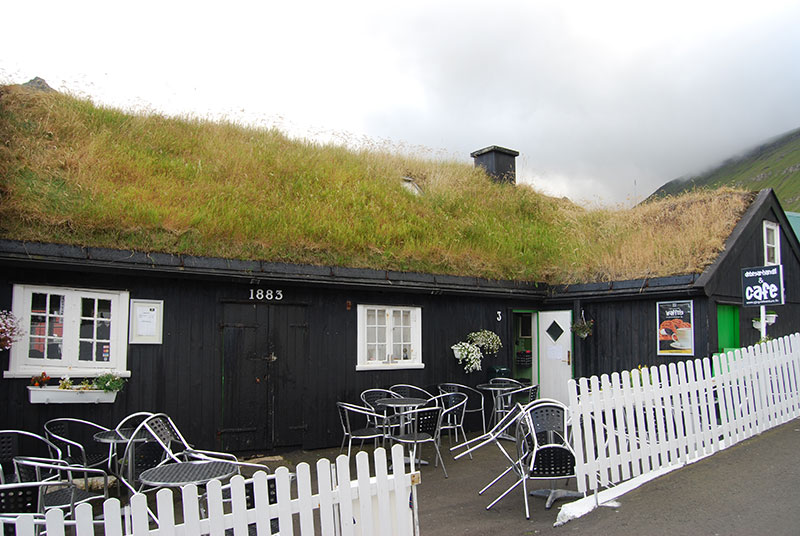
Cafe in Gjogv
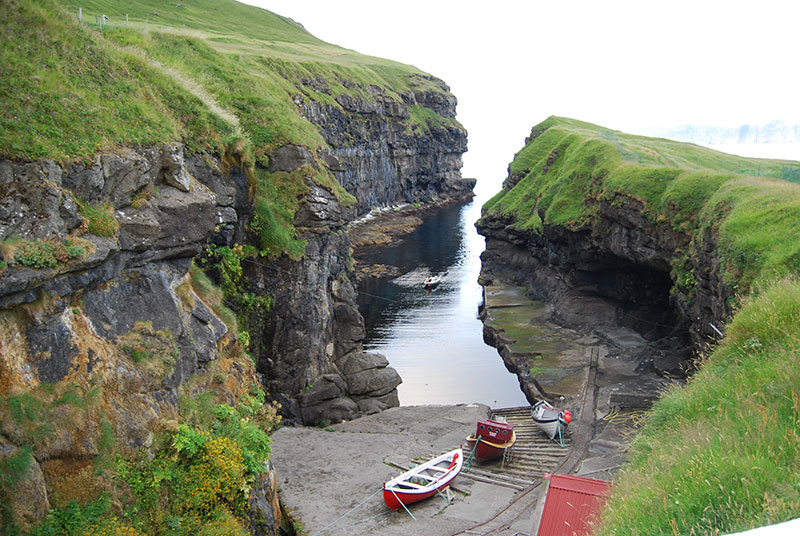
Walk along the coast from Gjogv
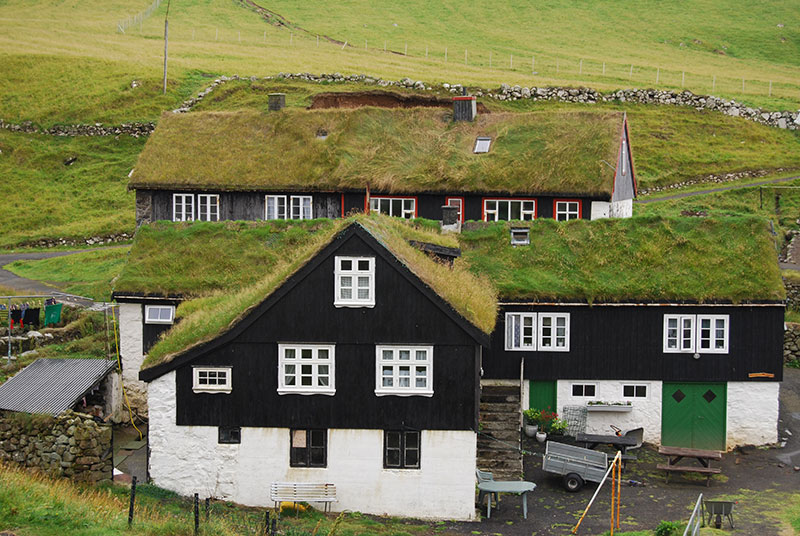
Typical grass-roofed houses
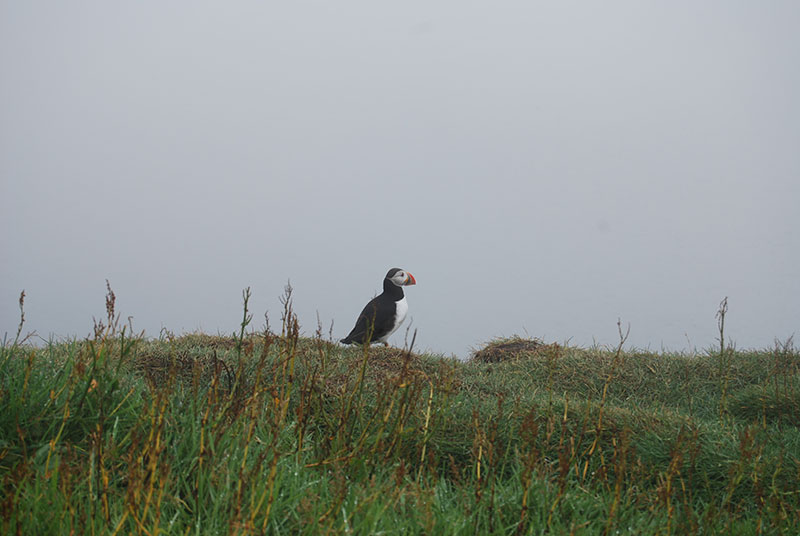
Puffin on Mykines
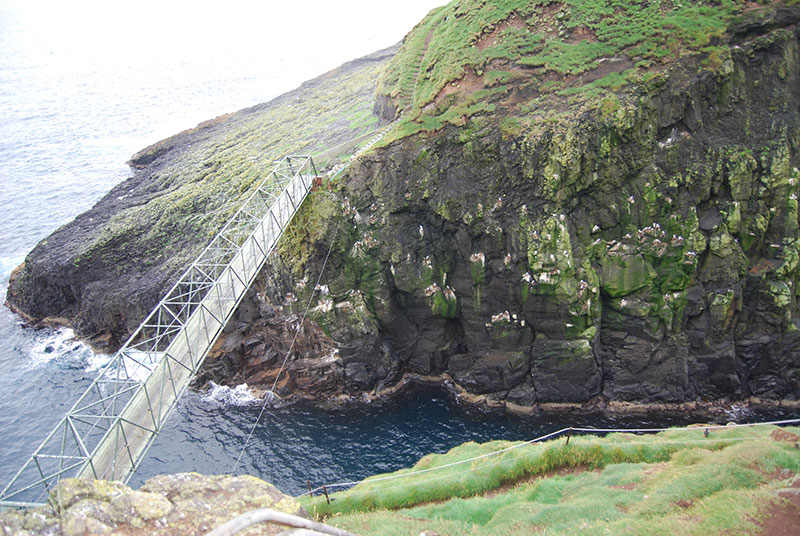
Bridge on Mykines
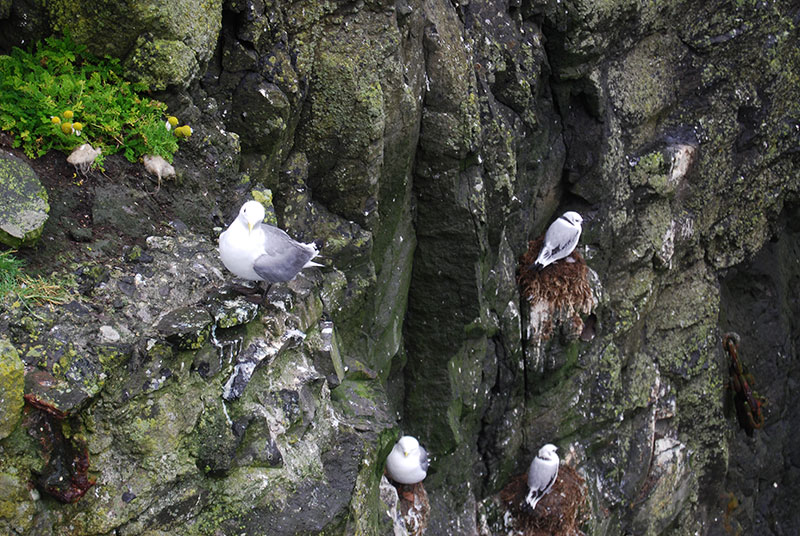
Gulls on Mykines
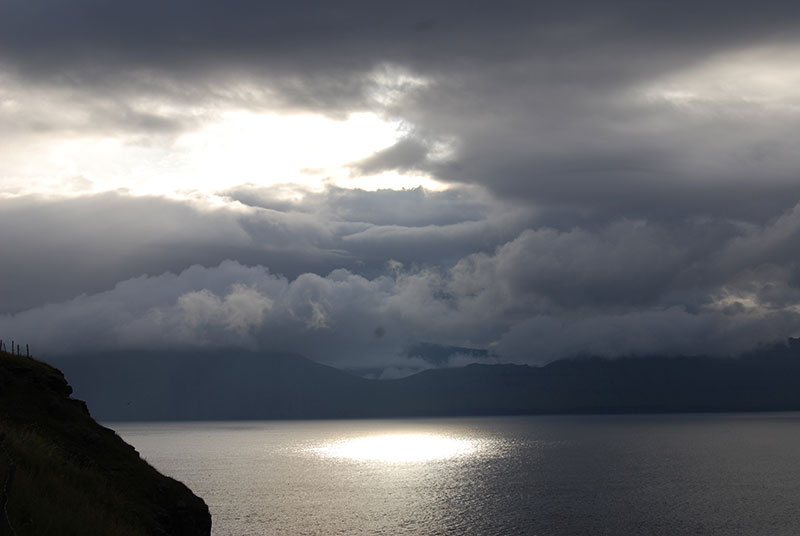
View from Mykines
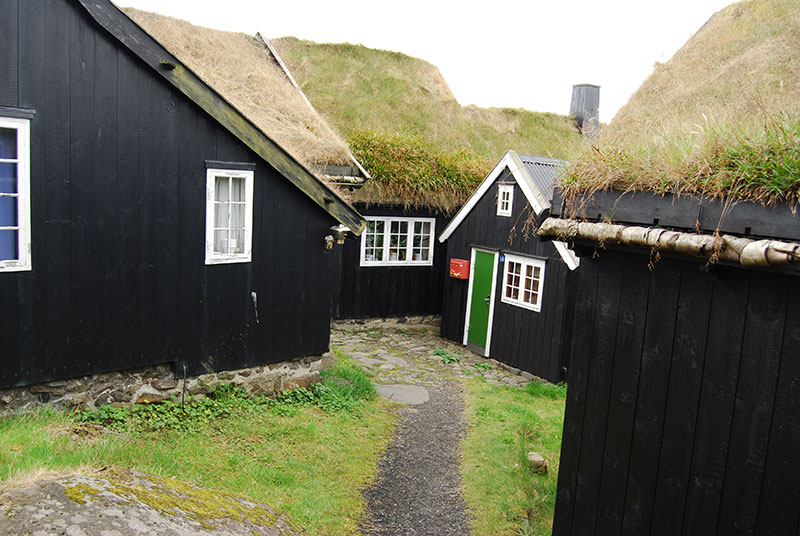
Torshavn
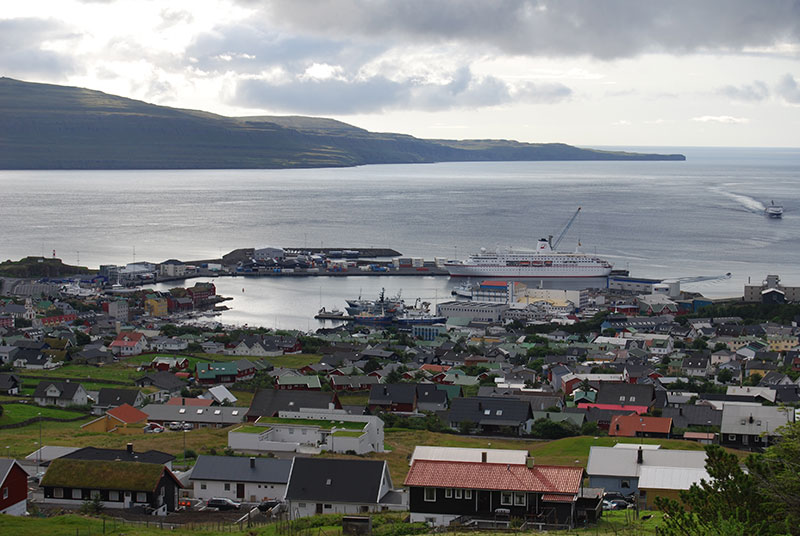
Torshavn
